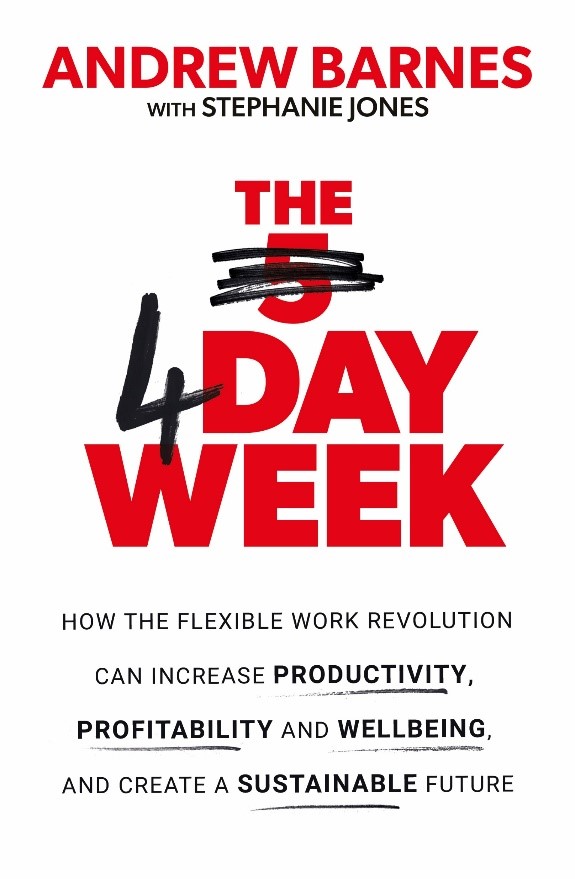After a month of planning, we embarked on the trial in March 2018 with the expectation that it might not provide all the answers but could be a big step towards making our business work better for our people and for the bottom line. We knew if it worked for us – even in part – we would prove the four-day week or an alternative flexibility model could be applicable in many other companies.
In Chapter Six we will delve into how we designed and conducted the trial and later implemented the four-day week within the business, but it is important to note that a large part of the structure of the four-day week was generated by our staff, who we asked to design the trial in accordance with their individual and team workloads, performance objectives and personal schedule preferences.
We already had a modicum of data from internal staff engagement surveys conducted annually from 2015 to 2017, and this formed the basis of our pre-trial engagement scores. However, the questions were somewhat perfunctory, focusing only on how engaged an employee was with the company or how satisfied with their job, and they yielded largely superficial results. We quickly realised we needed expertise from outside the company. The academic researchers we invited to monitor the preparation for the trial, the trial itself and the aftermath were invaluable in securing robust data on engagement and a host of other metrics.
The trial was the best way to test my hunch that flexible working – in our case, the four-day week, though this book will discuss a number of alternative options – is the right thing for employers to do as the ramifications of the Fourth Industrial Revolution play out in unpredictable ways.
As a businessman I want an organisation that is fiscally healthy, where there is steady growth, positive profit and loss, and channels to innovate and expand our platform and services into new markets. As an employer, I want the culture to be in good health, with our people being the best they can be while they’re in the office and the best they can be at home. They deserve that, and so do their loved ones.
Instinctively, I felt the four-day week offered a natural solution to ills that, while they had not noticeably afflicted my company, are widespread in our culture of work. As our staff understood, productivity was the number one objective of the trial, but I also sought to find out whether we could achieve optimal work-life balance and guard against excessive stress, mental and physical health problems, presenteeism and hyperconnectedness by asking people to do more in the office in exchange for more time away from it. I was convinced the trial would help me understand whether my concerns for the well-being of my staff were justified – and whether the four-day week represented a solution.
To other employers pondering a change, I say: set your purpose first. The four-day week is only one form of flexible working, and it may not be right for every company. Be clear about what you want to achieve at every stratum, from the board to the leaders and staff. Do you want to increase engagement and productivity, reduce absenteeism and presenteeism, attract and keep good people, motivate your staff, achieve better overall organisational health and culture, increase revenue? If your objectives are explicit at the start, success and milestones can be measured accurately.
Keep asking your employees for their views. Ask them to think about, discuss and record how they will increase their own individual productivity and that of their team. This can elicit revelatory conversations about what productivity looks like – not in generic terms but for your business, at an individual level. This information is gold. Be prepared to invest time in this process and make decisions based on the answers you receive.
For leaders and managers, this is the opportunity to take an inclusive role in committing to the initiative and guiding and coaching their teams. This engagement will build trust and have multiple benefits beyond performance. One of the most valuable outcomes is more people will find more enjoyment in their work. This enriches an enterprise far beyond what can be read on a balance sheet.
Think about how the demography of the cities and countries in which you operate is changing, and about how flexible working affects a more diverse workforce: do you have part-time employees, parents of young children, different generations of workers, people who have migrated from other countries and cultures? What do they need from the workplace structure in order to be their best at work and at home?
Most of all, be honest with yourself about what is possible in your company in its current form. Later in the book we will address the obstacles to the four-day week and flexible working, but for now, having witnessed and heard reports of failed attempts, I can say the common factors are a lack of groundwork and a top-down approach.
Unless you already have an intimate understanding of what all your staff are doing on a daily basis, what they can do better and what they want to change, you cannot unilaterally impose a four-day week and expect success. Similarly, a trial is how you find out what you don’t know.
Before our trial, I had spent four years painstakingly cultivating a new business and a healthy culture out of two acquired companies. This included layering digital methodologies across what was a traditional business. In some ways, we were getting sharper, but the trial exposed all kinds of old-fashioned, time-consuming duties which people had inherited from previous employees and never thought to question, so often their managers had no clear picture as to the roadblocks to productivity buried deep in the business. Once their day off was being held hostage by those unnecessarily laborious tasks, people found a way to do things better.
Remember: the four-day week is about productivity first. I cannot be more explicit than that. When people ask me about the goodwill factor of the four-day week, I remind them the feel-good part is a secondary benefit, because like it or not, our lives as we know them depend on companies turning a profit, the tax pool being topped up, and households maintaining solvency. There is an excellent case for flexible working that meets business, social and public health objectives, but it falls at the first hurdle if productivity is poor or not maintained.
The extraordinary equation of the four-day week is that by putting productivity first, and incentivising staff to do the same, the value ripples beyond the boardroom and the balance sheet to the home lives and personal well-being of workers.

Follow us here and subscribe here for all the latest news on how you can keep Thriving.
Stay up to date or catch-up on all our podcasts with Arianna Huffington here.


